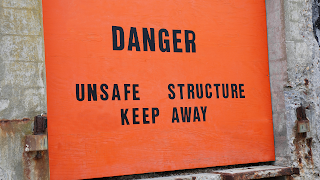Breaking the Cycle: Understanding the Pain That Haunts a Bloodline
Last month, I dreamed about a relative who had passed away several years ago. It was the first time I had seen her in a dream since her death, and to my surprise, she appeared completely different from how I remembered her in life. She was happy—on vacation, relaxed, and surrounded by loved ones.
In reality, this was far from the woman I knew. The version of her I encountered in my dream was free in a way she never was while she was alive. But what struck me the most was who was present with her—my daughter, her youngest, and myself. Her two eldest daughters were missing.
Even in the dream, I could feel that the energy was different—lighter, peaceful, unburdened. It was a stark contrast to the reality of the family dynamic she left behind.
Then, in the dream, she passed. She simply fell asleep in a chair and never woke up.
Processing the Dream: A Hard Truth
When I told my daughter about the dream, she paused for a moment before saying something that hit me like a ton of bricks:
"That would have been our reality if she had her mother and a father who wasn’t abusive."
Her words sat with me. She was right. My relative was a product of deep, unprocessed trauma, and we all felt the weight of it. She was raised without a mother after losing her at age 9. She had an abusive father, never married, had six children, and was possibly molested. She hated her father yet unconsciously defended the same behaviors in her own toxic children. She was deeply male-centered, placing her sons on a pedestal while failing to protect and nurture her daughters.
I started journaling, breaking down the layers of trauma that shaped the version of her we experienced. I wrote each factor on a board like I was trying to solve a case:
✔️ Mother died when she was 9.
✔️ Abusive father.
✔️ Possibly molested.
✔️ Never married.
✔️ Six children.
✔️ Narcissistic tendencies.
✔️ Severe father wounds.
✔️ Defended toxic behaviors she once suffered from.
✔️ Male-centered, with sons treated as superior.
When I stepped back and looked at everything, it became clear: she did not know how to be anything other than her pain. And that pain did not just stay with her—it destroyed a bloodline.
Pain That Repeats Until Someone Ends It
Thinking about this darkness reminded me of other people in my life—my mother, my child’s father, my ex. They are all the same person in different forms—struggling with crippling pain they refuse to acknowledge. Instead of facing their wounds, they mask it, pretending to be good people while their trauma destroys them from the inside out. And as it kills them, it destroys the people closest to them.
But here’s the thing: we all have a choice.
Pain may explain someone’s behavior, but it does not excuse it. We are not responsible for what was done to us, but we are responsible for whether we heal or let it fester into destruction.
Breaking the Cycle Starts With Awareness
If you’re reading this, I urge you to understand your family's anatomy. Study the generational pain points that could be haunting your bloodline. Recognize the trauma that has been passed down and how it may be playing out in your own life.
And then be the one to end the cycle.
Because until someone chooses differently, the pain will continue, generation after generation. It may not be easy, but healing is the only way forward.
.png)

.png)
.png)
Comments
Post a Comment